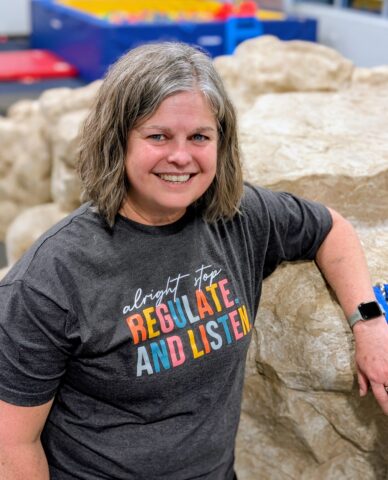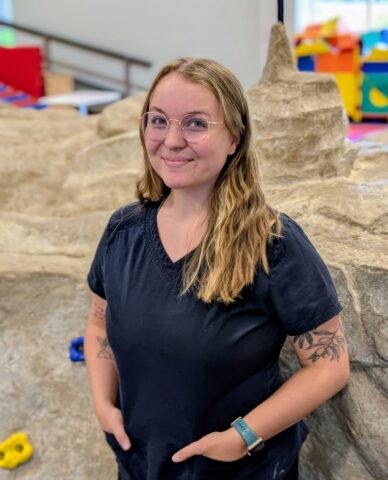Occupational Therapy FAQ
-
Typical areas that we see challenges in are related to dressing, bathing, feeding/eating, and academic engagement. Occupational therapy also engages how individuals experience, process, and share sensory information.
Children with difficulties in these areas will often show fear or avoidance of overwhelming sensory situations, such as loud or busy places. Sometimes they will be the kids who spin or run into things constantly as they are seeking more input.
-
If you note that your child is not meeting significant milestones, a referral for therapy services may be beneficial. Some signs can be: difficulty with buttons, zippers or snaps; difficulty with holding or using crayons or pencils; difficulty with self feeding. Sensory related concerns may show up in children as:
- Intolerance of loud noises
- Difficulty with touching new or novel textures
- Difficulty being in busy or active environments
- Tantrums or breakdowns after being in these situations
- Picky or limited food intake
-
Occupational therapy focuses on functional engagement in daily activities, so therapy often looks like very focused engagement in daily tasks such as dressing, feeding, or homework tasks.
Depending on the needs of the child, engagement in these activities may be broken up by time in our sensory gym or barn, or enhanced by engagement in a unique environment such as sitting on a bolster swing, floating in the pool, or riding on the back of a horse.
The goal is to allow the child time to learn, practice and master the necessary skills in a way that they carry over to their everyday life.
Meet our Occupational Therapy Team
-

Toby Cross
Program Director - OTR, CTRI - AHCB Credentialed Therapist
-

Charlotte Kimber
OTR/L
-

Hannah Shoemaker
COTA/L
-

Rebekah Sigafus
COTA/L
